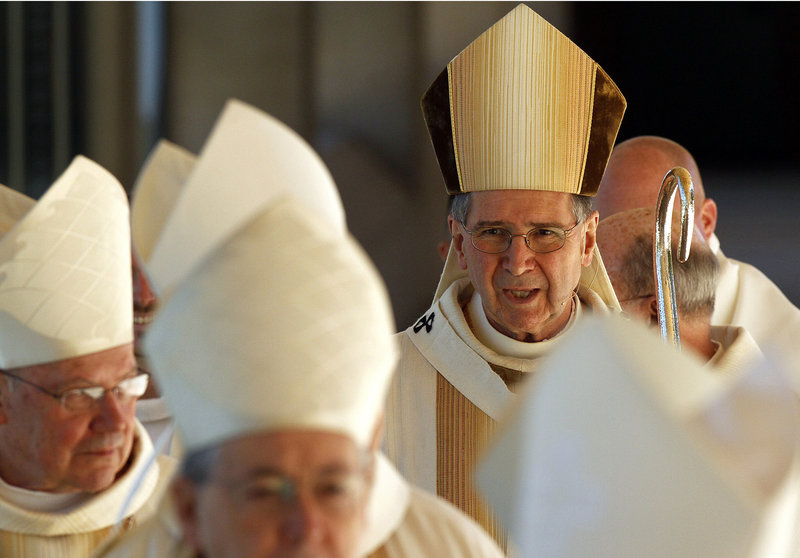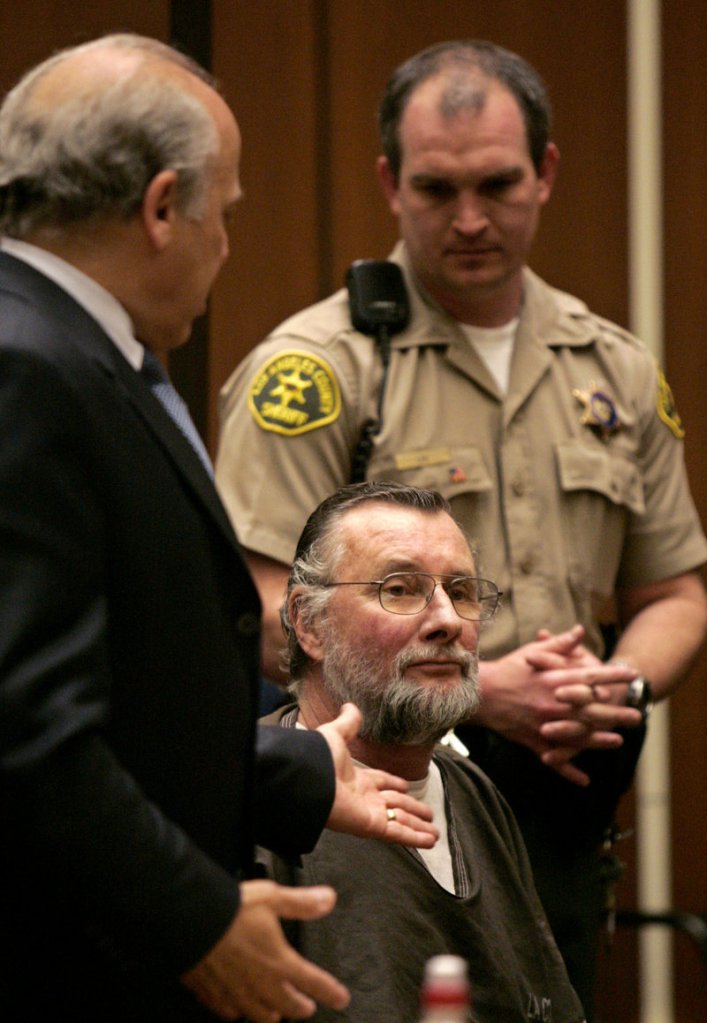Preparing for his return to the Archdiocese of Los Angeles after six months’ treatment at a center for pedophile priests, the Rev. Michael Wempe sat down to type out a list of concerns. Arrangements for his dog. Counseling and support groups for himself.
Above everything, he wrote at the top of the list in the 1987 memo: “Confidentiality – Reports from here destroyed, even this paper.”
Wempe had good reason for the request. The reports from the center laid out how he had confessed to molesting young boys. Wempe’s therapists also urged church officials to immediately destroy everything. If the papers fell in the hands of law enforcement, the priest, the archdiocese and the treatment center could be in serious trouble.
But Cardinal Roger Mahony and other church leaders ignored the warnings. Rather than shred or burn the reports, they preserved them in carefully organized file cabinets where they remained until this year.
The release of those records — and thousands of pages of other damaging abuse documents in January — raised a question: Why did the church hold on to decades-old evidence of its priests’ sins?
The explanation lies in centuries of Catholic Church history and is a tale involving secret betrothals, scandal, even a murder or two. Since the time of the Enlightenment, the Catholic Church has maintained two sets of records: one for the mundane and a second “secret archive” for matters of a sensitive nature. The cache — known as sub secreto files, Canon 489 files, confidential files or C-files — was to be kept under lock and key, only for the eyes of the bishop and his trusted few.
Since the files became known to prosecutors and plaintiffs’ lawyers, the American justice system has pried open the doors to an archive long kept sealed. Thousands of additional pages are expected to become public in coming months, as more than a dozen Catholic orders — Salesians, Claretians, Vincentians and others — prepare to bare their own secrets pursuant to agreements with victims. Los Angeles County Superior Court Judge Emilie Elias could set the date for their release at a hearing Tuesday.
For some, the revelations were damning. For others, they offered validation for dark, private memories. The files were never meant to go beyond church walls.
The earliest mention of the secret archives in church history dates to the 1700s, in an edict on marriage issued by Pope Benedict XIV. The archives were to bear witness to “marriages of conscience” — unions that may be banned under civil law or otherwise scandalous, but celebrated by a priest in secrecy.
In the 20th century, when church law regulating the archives was written, Canon 489 prescribed that there was to be “a safe or cabinet, completely closed and locked, which cannot be removed” to which only the bishop would hold the key.
Safeguarding the files was not taken lightly. One scholar suggested in 1954 that files could be kept in “modern safes” that could “withstand concentrated burglarious attacks by drills, sledge hammers, wedges and mechanical tools.”
Over time, the files came to hold information about priests’ alcohol problems, squabbles over parish funds, clerics who had impregnated parishioners. By the 1970s and ’80s, church leaders found themselves increasingly documenting in the files whispers of a more disturbing sort: sexual abuse of children at the hands of priests.
Few outside the innermost circles of the church knew of the trove’s existence until the late 1980s, when Minneapolis attorney Jeff Anderson received a tip from a priest that evidence of molestation was probably sitting somewhere within the local diocese. Anderson and other victims’ lawyers subpoenaed the secret files. Church lawyers resisted, arguing that forcing the church to disclose the files was an infringement of its right to religious freedom.
It doesn’t matter “whether the church gives a file a particular name,” judges ruled in one 1988 Pennsylvania case, ordering the disclosure of the file of a priest who allegedly molested a “mildly retarded” boy for nearly a decade.
Anderson said that when he finally laid hands on the files, he felt shivers. “It makes you both excited and sick at the same time,” he said.
• Prosecutors in Toledo, Ohio, stumbled upon archives there while investigating a cold-case murder of a nun.
They had their suspicions trained on the Rev. Gerald Robinson, believing that new forensic technology linked him to the 1980 death of the nun, who was covered with an altar cloth and stabbed 31 times. In 2004, they subpoenaed the local diocese for Robinson’s file but were incredulous at how little the church offered.
“I said, ‘Three pages! He’s been working there for 20 years!’ ” said Thomas Matuszak, then a Lucas County prosecutor.
Matuszak spent two weeks poring over canon law and applied for a search warrant for the secret files, using church law as probable cause. Detectives went to the diocesan headquarters with the warrant and came away with a 148-page file, including another priest’s letter laying out his suspicions of Robinson. The priest was convicted in 2006.
• In Pennsylvania, it was an accused septuagenarian murderer who sought the secret files. The man, David Stewart, had shot and killed a priest whom he suspected of having an affair with his wife. He demanded the Rev. Leo Heineman’s records to prove he had fired the gun in self-defense.
After a seven-year battle that went to the state Supreme Court, the church was ordered in 1997 to turn over the file. In it was a letter regarding the priest’s alcohol treatment and an anonymous letter about his erratic behavior, according to local reports. Stewart was convicted the next year of manslaughter but cleared of premeditated murder.
• When claims of molestation by priests flooded into the Los Angeles Archdiocese after the sex-abuse scandal erupted in 2002, church leaders’ reaction was to reach for each priest’s C-file. Some already had a thick volume chronicling a troubled history.
New accusers wrote to the archdiocese about Wempe, by then serving as a chaplain at Cedars-Sinai Medical Center in Los Angeles.
“I should have written this letter many years ago,” one man wrote in a letter that was added to Wempe’s lengthy file. “It would happen during weekend trips to the mountains … a cabin, and in a vacation trailer.”
Within months, the district attorney obtained grand jury subpoenas demanding the archdiocese hand over the confidential files.
The church fought prosecutors to the U.S. Supreme Court but ultimately lost. Wempe was convicted in 2006 of molestation and sentenced to three years in prison.
It would take a six-year legal fight for the church to publicly release 375 pages from Wempe’s file dating back to 1978. In the pages were not only Wempe’s abuses, but the blunt words of church leaders who clearly thought no one outside the church would ever read the secret file.
Terry McKiernan, founder of BishopAccountability.org, which collects clergy sex-abuse related documents from across the United States, said that Mahony was clearly a far more meticulous keeper of records than his predecessors and that may have hurt him when the archive was made public.
“I don’t know of any other diocesan archive where scheming to manipulate reporting laws and access of law enforcement to these cases is as explicit as in these L.A. documents,” McKiernan said.
Send questions/comments to the editors.




Success. Please wait for the page to reload. If the page does not reload within 5 seconds, please refresh the page.
Enter your email and password to access comments.
Hi, to comment on stories you must . This profile is in addition to your subscription and website login.
Already have a commenting profile? .
Invalid username/password.
Please check your email to confirm and complete your registration.
Only subscribers are eligible to post comments. Please subscribe or login first for digital access. Here’s why.
Use the form below to reset your password. When you've submitted your account email, we will send an email with a reset code.